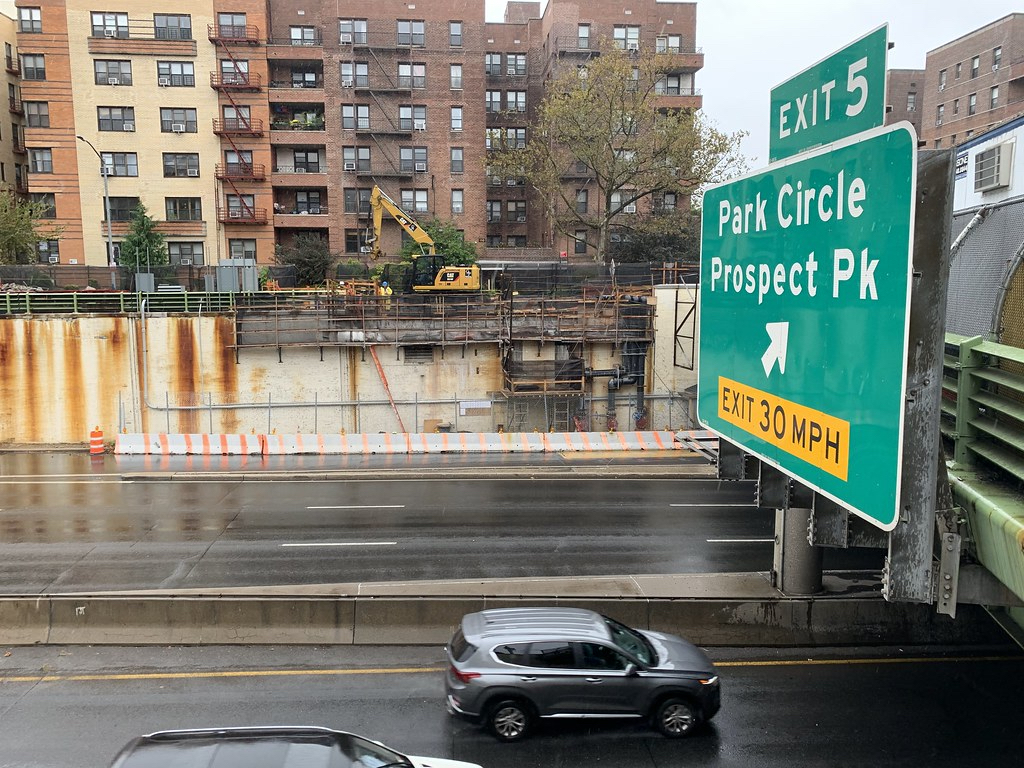To Reduce Flooding on the Prospect Expressway, Stormwater Pumping Station Gets $10 Million Upgrade
October 17, 2019
New Pumps will Increase Stormwater Removal Capacity by 50 Percent; Photos and a Map are Available on DEP’s Flickr Page
The New York City Department of Environmental Protection (DEP) today announced that a $10 million upgrade of the Prospect Expressway Stormwater Pumping Station is underway. Currently, the Station’s pumps can move nearly 10 million gallons of stormwater a day. When the upgrade is completed in 2020, the pump station will be able to remove 16 million gallons of stormwater a day.
“As we upgrade our infrastructure we must take into account the changing climate and more intense rain storms, which is why we are investing $10 million to increase the capacity of the Prospect Expressway Pump Station by 50 percent,” said DEP Commissioner Vincent Sapienza. “Stormwater management in an urban setting like New York City requires a multi-faceted approach, which is why we are also building the country’s largest green infrastructure program, including green roofs and rain gardens to naturally absorb stormwater.”
“I am pleased that DEP is upgrading the Stormwater Pumping Station at the Prospect Expressway. We have seen the effects when our city is hit by severe weather, such as the 2012 Hurricane Sandy. According to National Climate Assessment Report, the effects of climate change will result in an increase of heavy downpours in our region. With a city as active as New York, and the Prospect Expressway which transports tens of thousands of vehicles each day, flooding can be debilitating,” said Assembly Member Rodneyse Bichotte. “Foresight and planning on the upgrade of our systems pays off for a safer and healthier environment.”
“As a member of the Environmental Conservation committee in the Assembly, I am proud to have supported the Clean Water Infrastructure Act, which invested over $2.5 billion to address concerns about drinking water quality and deteriorating water treatment facilities across the state—including $200 million to New York City for necessary projects like the upgrade of the Prospect Expressway Stormwater Pumping Station in my district,” said Assembly Member Robert Carroll. “These important and necessary upgrades will allow for this pumping station to increase its stormwater removal capacity by 50 percent, upgrade most of its infrastructure and reduce flooding on the Prospect Expressway when a heavy rain occurs. As the threat of climate change intensifies, we must remain focused on maintaining and upgrading our infrastructure. It is critical that this project be completed as soon as possible.”
In addition to the three new pumps, the upgrade will include the replacement of much of the equipment within the facility, including fans, pumps, piping, electrical equipment and lighting. The project will also include construction of an entrance for DEP staff from the Ocean Parkway service road. Currently, staff must close a lane to traffic on the Expressway to access the facility.
Most of the City’s 7,500 miles of sewers utilize the power of gravity to move stormwater and wastewater however, there are 96 pump stations that help drain topographical low points across the five boroughs. The Prospect Expressway Stormwater Pumping Station is located beneath the southbound Ocean Parkway service road, south of Caton Avenue and adjacent to the Prospect Expressway in the Kensington/Windsor Terrace section of Brooklyn. The station was built in 1959 to pump stormwater from Prospect Expressway to a nearby sewer for eventual treatment at the Owls Head Wastewater Resource Recovery Facility in Bay Ridge, Brooklyn.
DEP manages New York City’s water supply, providing approximately 1 billion gallons of high-quality drinking water each day to more than 9.6 million residents, including 8.6 million in New York City. The water is delivered from a watershed that extends more than 125 miles from the city, comprising 19 reservoirs and three controlled lakes. Approximately 7,000 miles of water mains, tunnels and aqueducts bring water to homes and businesses throughout the five boroughs, and 7,500 miles of sewer lines and 96 pump stations take wastewater to 14 in-city treatment plants. DEP has a robust capital program, with a planned $20.1 billion in investments over the next 10 years that will create up to 3,000 construction-related jobs per year.For more information, visit nyc.gov/dep, like us on Facebook, or follow us on Twitter.





